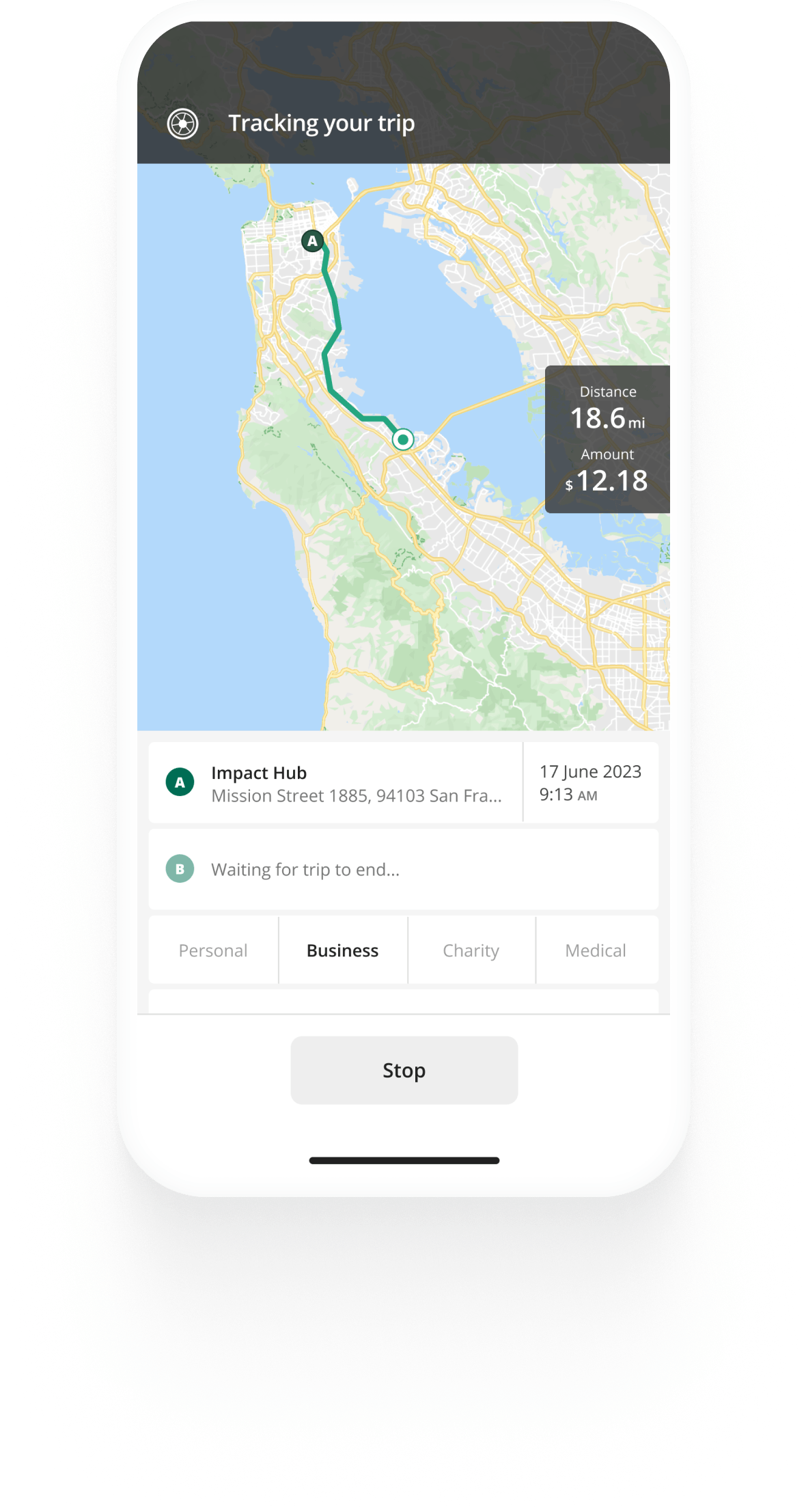Track mileage automatically
Get started
IRS Mileage Rates 2024
The IRS issues 2024 mileage rates
The IRS has announced the standard mileage rate for 2024: 67 cents per mile, up 1.5 cents from 65.5 cents in 2023. Issued in Notice 2024-8, on Dec. 14, 2023, it covers the business use of a vehicle (cars, vans, pickups, and panel trucks) and will come into effect Jan. 1, 2024.
Rates for medical, moving and driving in the service of charitable organizations were also announced:
| Federal mileage rates | 2024 | 2023 |
|---|---|---|
| Business use (cars, vans, pickups, panel trucks) | 67 cents per mile | 65.5 cents per mile |
| Medical and moving (Armed Forces active-duty only) | 21 cents per mile | 22 cents per mile |
| Charity | 14 cents per mile | 14 cents per mile |
Further notes on the rates and who can use them:
- The standard mileage rates cover vehicles that run on electricity, hybrid vehicles as well as diesel and gas vehicles.
- To use the rate for moving, active-duty members of the Armed Forces must be moving under orders to a permanent change of station.
- You can still deduct your expenses while driving for business if you use other types of vehicles (including motorcycles and boats), but you have to use the actual expenses method.


Mileage tracking made easy
Trusted by millions of drivers
Automate your logbook Automate your logbook

Automatic mileage tracking and IRS-compliant reporting.
Get started for free Get started for freeHow you can use the mileage rate for business
The mileage rate for business is the rate at which you can get reimbursed for your driving for business purposes using your own car without having the reimbursement included in your income. Any higher than the standard mileage rate and your reimbursement is considered income and is subject to tax.
If you are self-employed (1099), you can take a tax write-off without needing to be reimbursed. You can either use the mileage rate or the actual costs method.
If you are a W-2 employee, since the Tax Cuts and Jobs Act in 2017, your employer can elect to reimburse you for driving for business, but you cannot take a direct tax write-off. This is in effect until January 1st, 2026.
There are a few exceptions to the requirement for reimbursement: Reserves of the Armed Forces, state and local government officials paid on a fee basis can still use the standard business mileage rate and deduct unreimbursed travel expenses (including driving their own car for business). Keep in mind that this is an adjustment to total income on line 12 of Schedule 1 of Form 1040.
As an employer, the standard mileage rate represents the highest rate at which you can reimburse your employees without them being taxed.
If you have further questions on any of the above, we should be able to answer them in our more comprehensive guide on mileage reimbursement and deductions in the US.
How are the federal mileage rates set?
The IRS sets and adjusts the rates based on the costs of owning and operating a car. They follow both fixed and variable costs and sometimes even adjust rates mid-year as well as at each calendar year. The rate for business is set based on both fixed and variable costs, while the rates for medical and moving are set only based on variable costs.
Fixed costs taken into account, among others, include insurance, license and registration fees, and taxes.
Variable costs taken into account, among others, include gas, parking, oil change, tire change, and new batteries.
The rate for charity is set by statute and has not changed since 1998.
For further reading, see the IRS Notice 2024-08, published Dec. 14th, 2023.
FAQ

Tired of logging mileage by hand?
Effortless. IRS-compliant. Liberating.
Top posts
Related posts
IRS Mileage Guide
Latest update: April 24, 2025 - 10 min read
Mileage reimbursement in the US — rates and rules for employees, self-employed and employers in the US.
IRS Mileage
Latest update: December 23, 2024 - 2 min read
Find out what IRS mileage is and how you can claim it. See how much you can claim per mile from the IRS for your business-related driving.
DoorDash Background Check
Latest update: January 29, 2025 - 2 min read
Here’s what to expect when DoorDash conducts background checks, how Checkr works, and why it may take longer to get approved.

